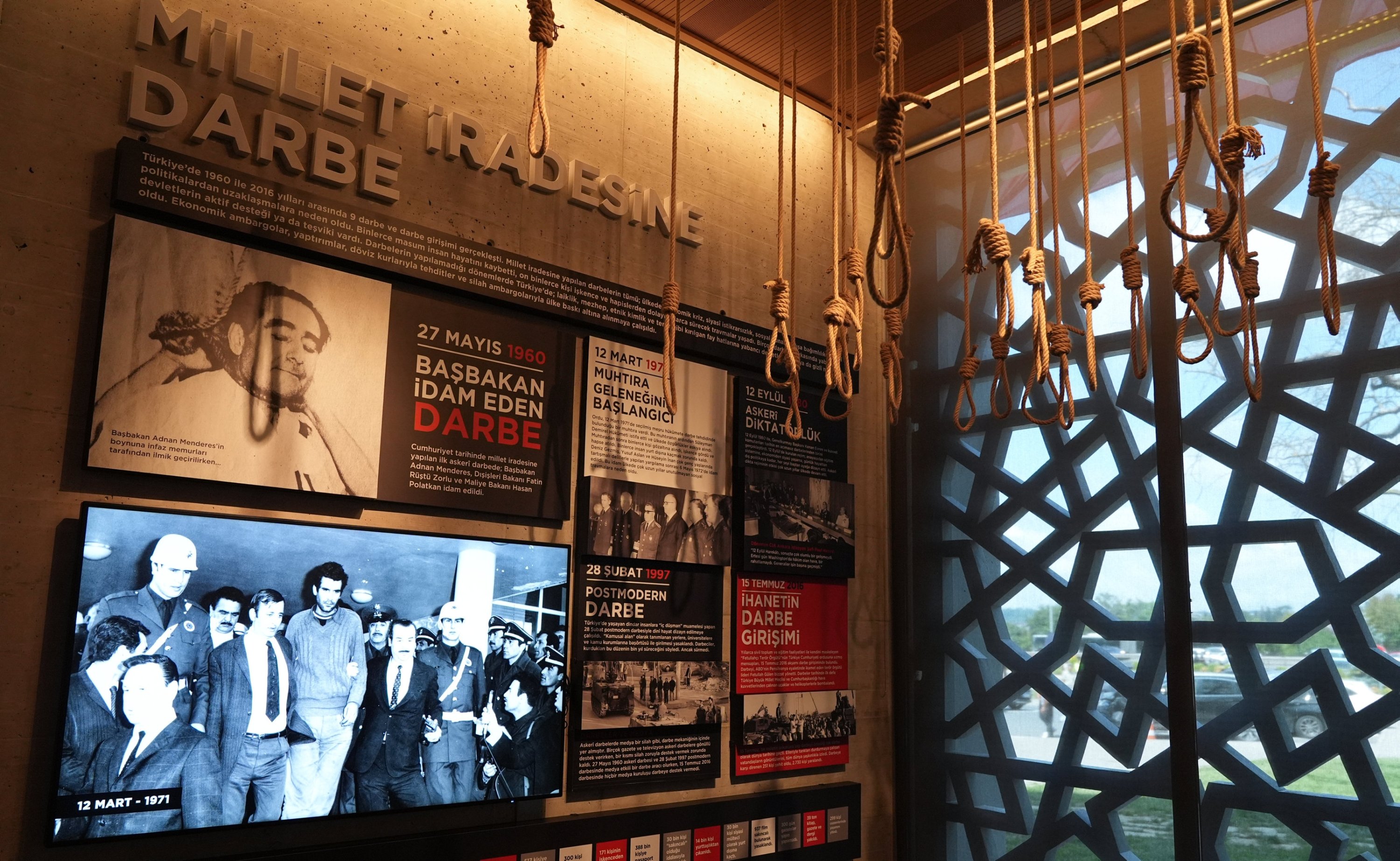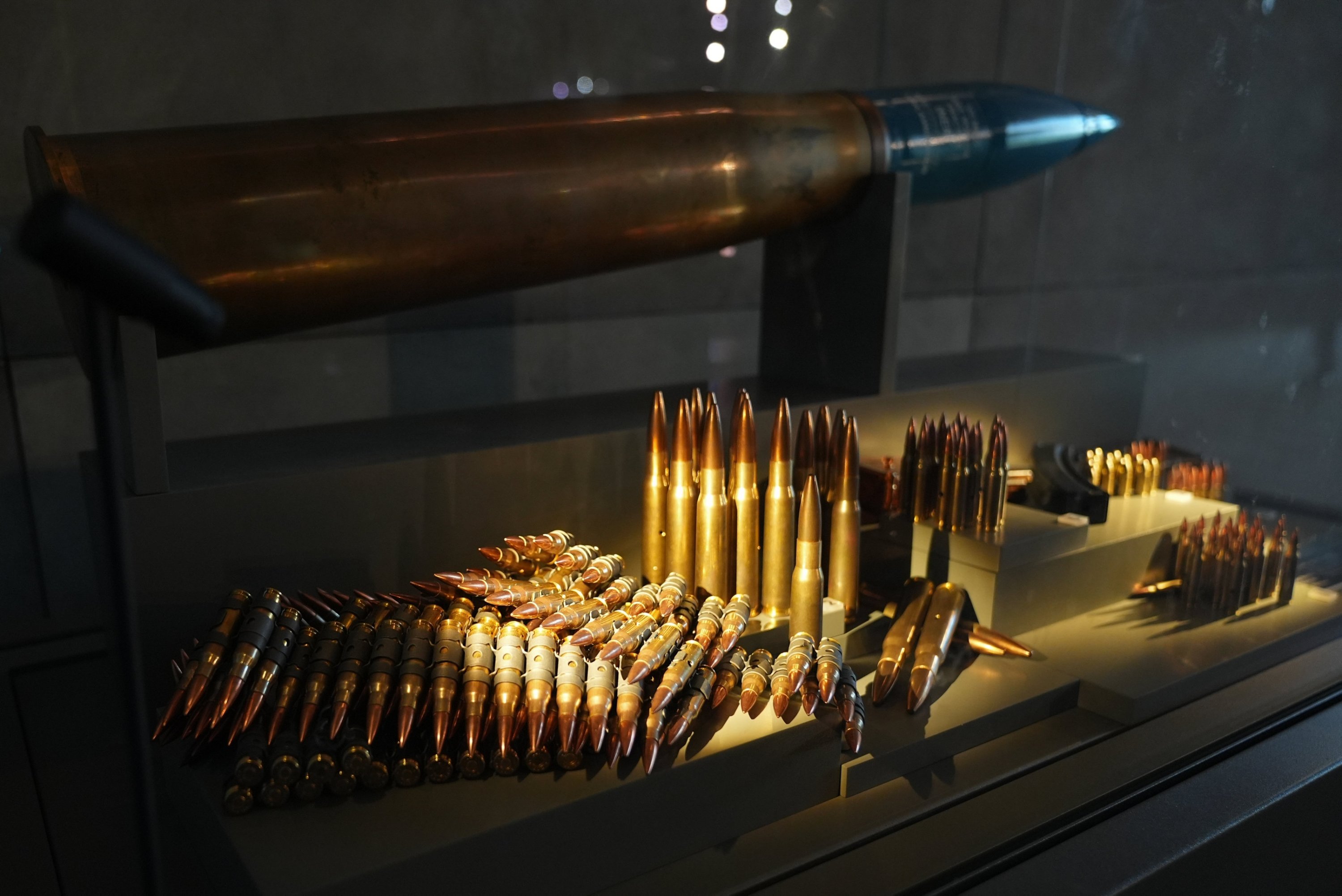© Turkuvaz Haberleşme ve Yayıncılık 2024
Eight years after FETÖ's treacherous coup attempt, the Istanbul Memorial 15 July Museum continues to remind visitors of the impacts of coups in Türkiye and around the world.
Opened in 2019 by President Recep Tayyip Erdoğan on the third anniversary of the coup attempt, the museum is located on the Anatolian side of the July 15 Martyrs Bridge.
Next to the July 15 Martyrs Memorial, the museum, which is also described as a "memory space," spans two floors. It houses numerous visual and auditory exhibits related to the coup, along with personal belongings of martyrs and veterans. The museum also features sections on global colonialism and the history of coups in Türkiye.
Museum Director Tuba Danış Ketancı explained to Anadolu Agency (AA) that the space was specifically designed as a place of memory and was inaugurated on the third anniversary of the coup attempt.

Ketancı highlighted the uniqueness of the July 15 coup attempt, saying, "Every year, coups happen around the world. The only armed coup attempt that was resisted and stopped by unarmed civilians was the July 15 coup by FETÖ. The resistance shown that night has undoubtedly elevated the honor of the Turkish nation. Our martyrs and living witnesses are still fresh in our memory. Therefore, establishing the Istanbul Memorial July 15 Museum was essential, and we must convey this to future generations."
She emphasized the museum's role as a memory space, stating that their first message to all visitors is "never forget."
The museum features security camera footage and chronological displays of mobile phone recordings from that night, allowing visitors to relive the events.
One of the key exhibits is a video titled "Call and Victory," which portrays how civilians responded to President Erdoğan's call to take to the streets, ultimately thwarting the coup attempt. The video concludes with the nation celebrating their victory.
The museum also showcases numerous objects from that night, including a civilian car crushed by a tank in front of the General Staff Building and the shoes of martyrs collected from across the country. Notably, 32 pairs of shoes on display were worn by martyrs that night. Other significant items include the beret and dagger of martyr Ömer Halisdemir, bullets used against civilians and the mobile phone of journalist Hande Fırat, which played a crucial role in President Erdoğan's call to action. Additionally, the museum exhibits motorcycles, helmets, phones, wallets and keys belonging to martyrs and veterans.

Ketancı noted that the museum employs digital displays to provide a comprehensive experience of the events from start to finish. Beyond documenting the night of the coup, the museum conveys a broader message, highlighting that FETÖ was neither the first nor likely the last threat.
The "colonial corridor" section traces the history of colonialism, starting from the exploitation of people for resources and labor to the establishment of a global hegemonic system. The museum also includes a history of coups in Türkiye and globally and a section dedicated to figures who stood against exploitation.
Ketancı mentioned that the museum attracts visitors from all walks of life and various age groups throughout the year. It has a broad visitor base, including schools and both domestic and international tour groups.
"Istanbul Memorial July 15 Museum is one of the most visited museums in Istanbul, following the Galata Tower and the Istanbul Archaeological Museum," she said, adding that their activity book for children has also been very popular.
